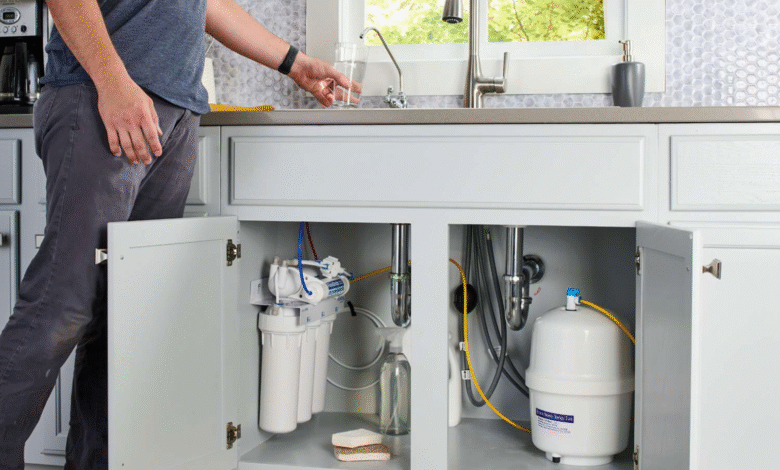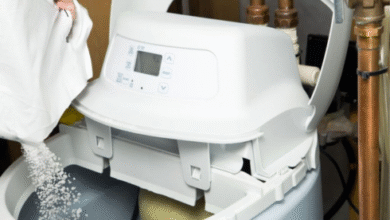Filtered to Perfection: Why a Reverse Osmosis System Might Be the Best Thing You Install This Year

Let’s face it—we all want clean, great-tasting water. But not all water is created equal. Maybe your tap leaves a strange aftertaste. Maybe you’re tired of hauling home packs of bottled water. Or maybe you’ve just started asking the bigger questions—What’s actually in my drinking water?
That’s where reverse osmosis comes in. Quietly sitting under your sink, doing its job 24/7, a reverse osmosis (RO) system is the unsung hero of household water quality. It filters out all the stuff you don’t want—think lead, chlorine, fluoride, nitrates, arsenic—and leaves behind water that’s crisp, clean, and surprisingly better than most bottled brands.
If you’ve ever Googled reverse osmosis installation near me, you’re not alone. Interest in home water purification has soared, and for good reason. People are paying more attention to what they’re consuming, and reverse osmosis offers one of the most reliable ways to take control.
So let’s dive into the what, why, and how of installing an under sink reverse osmosis system—and why it might just be the quietest upgrade with the biggest impact on your health and home.
What Exactly Is Reverse Osmosis?
It sounds technical, but the concept is pretty simple.
Reverse osmosis is a filtration process where water is pushed through a semi-permeable membrane, removing contaminants at a molecular level. It’s not just filtering out the big stuff—RO gets down to the microscopic level, removing up to 99% of dissolved salts, particles, bacteria, and unwanted chemicals.
Most home units include multiple stages: a sediment filter, a carbon filter, the RO membrane itself, and sometimes a final polishing filter to give the water that clean, neutral taste. Some systems even include a remineralization stage to add back essential minerals that make the water taste better and slightly boost your mineral intake.
Why Go Under the Sink?
Let’s be honest—countertop filters have their place, but they often feel clunky, limited, or slow. A pitcher in the fridge? Great if you live alone and don’t mind waiting 10 minutes. But for families, cooks, or anyone serious about hydration, it doesn’t quite cut it.
That’s where under sink reverse osmosis systems shine. They’re tucked away, out of sight, and deliver purified water straight to a dedicated tap at your sink. No waiting, no clutter, and no wondering if that old pitcher filter is still doing its job.
And once it’s installed? It’s almost completely hands-off, aside from a filter change every 6–12 months.
The Taste Test (Spoiler: It Wins)
Here’s the thing most people don’t expect—the taste of RO water is noticeably better. Like, “I can’t believe this is tap water” better. Coffee tastes richer. Tea feels smoother. Even pasta water just feels… cleaner.
That’s because reverse osmosis removes the stuff you can taste (chlorine, sulfur, iron) and the stuff you can’t (lead, nitrates, arsenic). The result is water that’s crisp, odorless, and neutral—perfect for cooking, drinking, or filling your reusable bottle on the go.
Finding the Right Fit: Installation and Providers
Installing an RO system isn’t rocket science, but unless you’re super comfortable under the sink with a wrench, it’s worth calling a pro. That’s why so many people search for reverse osmosis installation near me—because local installers can usually set up a system in just a couple of hours, and they know how to work with your existing plumbing.
A professional will also help you:
- Choose the right system size (depending on how much water your household uses)
- Install the dedicated drinking water faucet
- Make sure everything is sealed, flushed, and leak-free
- Walk you through maintenance steps like filter replacement
Pro tip: look for providers who also offer a service plan. Some will remind you when it’s time for new filters and even do the swap for you.
Maintenance? Barely.
People hear “multi-stage filtration” and assume it must be complicated. But RO systems are surprisingly low-maintenance.
Most filters need to be replaced once or twice a year, depending on usage and local water quality. The membrane—the heart of the system—lasts two to three years, sometimes more. And you don’t need tools or special skills to swap them out. If you can twist off a jar lid, you can change a filter.
How It Compares to Other Systems
Not all filtration is created equal. Here’s a quick side-by-side:
- Pitcher filters: Cheap, but slow and often limited to taste/smell filtering.
- Faucet-mount filters: Convenient, but bulky and easily clogged.
- Whole-house filters: Great for protecting appliances and showers, but don’t always give you the drinking water purity of RO.
- Reverse osmosis drinking water system: Best for deep purification and consistently high-quality drinking water. The gold standard.
Is It Worth It?
Absolutely. Especially when you consider the long-term benefits:
- Cleaner, safer water for you and your family
- No more bottled water waste or expense
- Improved taste in everything you cook and drink
- A little peace of mind every time you fill a glass
And let’s be real—water is one of the few things we use every single day. Why not make it the best it can be?
Final Sip: Water You Can Actually Trust
You shouldn’t have to second-guess what’s in your water. You shouldn’t have to settle for weird tastes, bottled waste, or half-measures when it comes to your health.
Installing an under sink reverse osmosis, reverse osmosis installation near me, reverse osmosis drinking water system isn’t just a home improvement—it’s a lifestyle shift. One that brings cleaner, purer, better-tasting water right to your fingertips, every single day.
Because great water shouldn’t be a luxury. It should be a standard. And with reverse osmosis, it finally can be.




